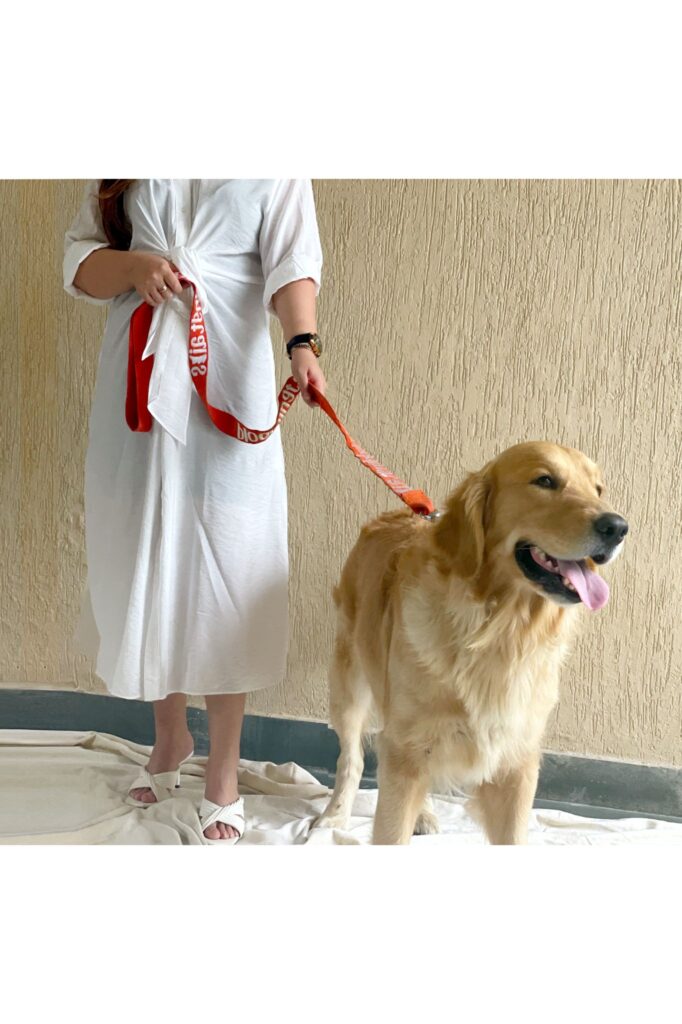The Benefits of Using the Right Dog Leash
Choosing the right dog leash is more than just a matter of style or preference—it’s a crucial component in training and managing your dog effectively during walks. This blog post explores the benefits of using the right leash, emphasizing how a well-chosen dog leash can enhance training sessions and make your walks more enjoyable and safer.

1. Enhanced Control During Training
Training a dog requires consistent, clear communication of expected behaviors. The type of leash you use can significantly affect your ability to control and guide your dog during training sessions. For example, a standard six-foot leash made of leather or nylon offers sufficient length to allow some freedom but still gives you enough control to keep your dog close and manage their movements. This balance is essential for effective obedience training, where you need to keep your dog close enough to focus on your commands without feeling restricted or anxious.
2. Safety First for using the dog leash
The safety of both the dog and the owner is paramount. A sturdy dog leash ensures that you can quickly and effectively control your dog, preventing them from running into dangerous traffic or approaching potentially aggressive animals. Safety leashes are particularly important in urban environments where the proximity to traffic and other hazards can pose a significant risk. Additionally, specialized leashes, such as those with reflective materials, enhance visibility during early morning or late evening walks, further increasing safety.
3. Preventing Behavioral Issues
A good leash also plays a crucial role in preventing behavioral issues. For dogs that tend to pull or lunge, no-pull harnesses and head collars can be attached to leashes to discourage this behavior effectively. These training tools redirect the dog’s attention towards the owner and minimize the dog’s ability to pull hard without causing harm or discomfort. Over time, this can teach the dog more respectful walking habits, leading to more pleasant walks and reducing the risk of injuries to both the dog and the walker.
4. Comfort for Both Parties
Comfort should never be overlooked when selecting a dog leash. A leash that is comfortable for both the owner and the dog makes training and regular walks more enjoyable. For owners, a leash with a padded handle or made with a natural cotton rope can prevent burns and strains from a pulling dog. For dogs, a leash that attaches to a well-fitted harness instead of directly to the collar reduces strain on the neck and throat, especially for breeds prone to respiratory issues or tracheal collapse.
5. Flexibility in Training Environments
The environment in which you train or walk your dog can dictate the type of leash that is most appropriate. For instance, retractable leashes may be suitable for open, safe environments where the dog can explore a bit more freely without the risk of running into traffic or other dangers. Conversely, in crowded or highly trafficked areas, a shorter leash is preferable to keep your dog close and secure. Understanding the different leash types and their appropriate uses allows pet owners to adapt to various surroundings effectively.
6. Building a Stronger Bond
The right leash can help build a stronger bond between a dog and its owner. Training sessions are not just about teaching commands; they are also about mutual trust and understanding. When a dog feels comfortable with the leash and harness being used, they are more likely to respond positively to training, knowing they are safe and secure. This trust enhances the overall relationship, making training less stressful and more successful.
7. Long-Term Durability and Cost-Effectiveness
Investing in a high-quality dog leash may seem like a small detail, but it can prove to be cost-effective in the long run. Quality leashes are designed to withstand the wear and tear of daily walks and training sessions without breaking or becoming frayed. This durability ensures that you don’t have to replace your leash frequently, saving money over time and ensuring that your training sessions remain consistent.
Conclusion
The right dog leash is a fundamental tool that benefits dog training and safety during walks. It offers control, safety, comfort, and helps in building a positive relationship with your pet. Whether you are training a new puppy or managing an adult dog, choosing the appropriate leash can make a significant difference in your effectiveness as a trainer and the quality of your walks together. Always consider your specific needs, your dog’s behavior, and the environment when selecting a leash to ensure that every walk and training session is as beneficial as possible.


